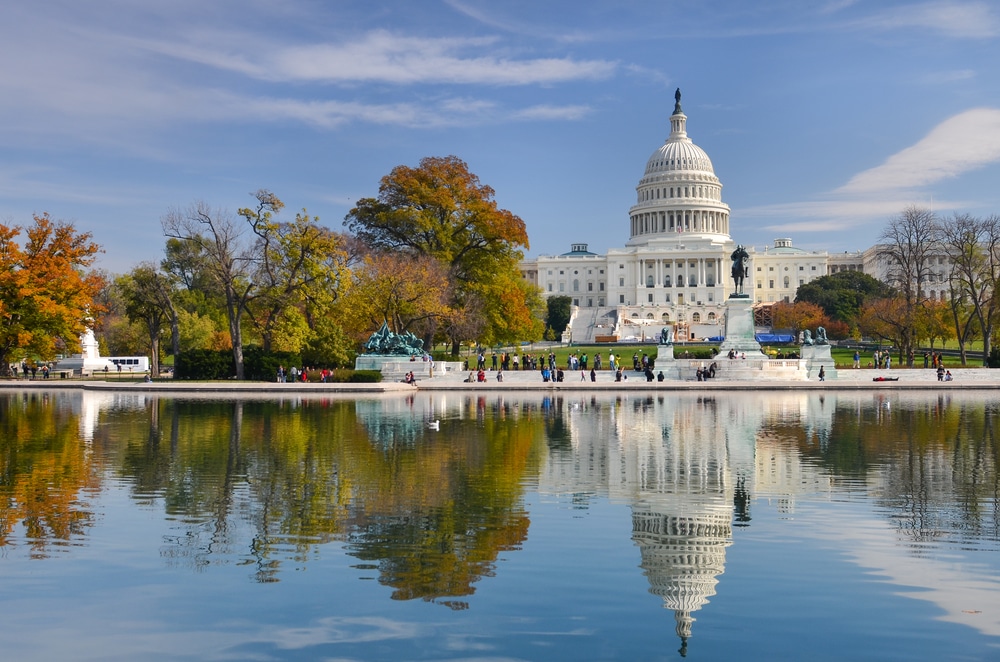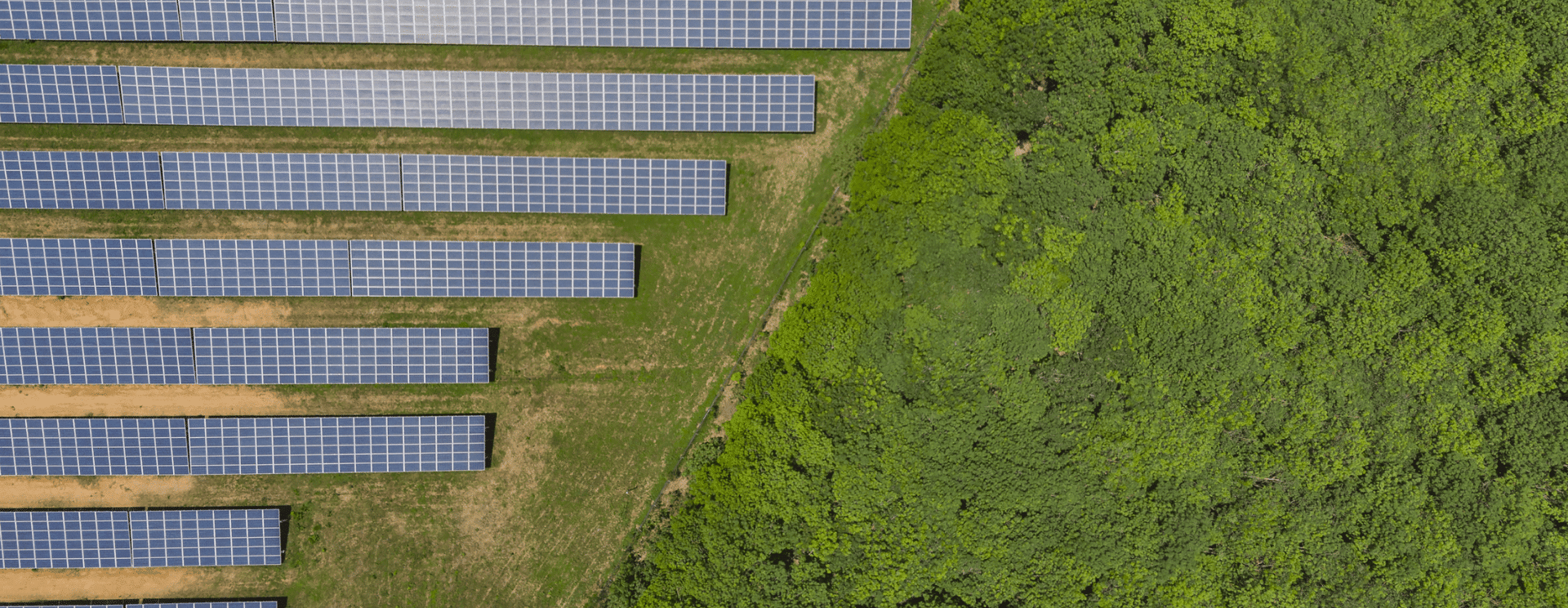What Happens When the U.S. Solar Moratorium Ends?

When the Biden administration implemented a tariff moratorium in June 2022 on solar panels and other products, the goal was to encourage more solar development while domestic producers and manufacturers could catch up.
Fast forward nearly two years later, and the moratorium is about to expire. While some companies and industries have prepared for this day, others have been feverishly looking for alternatives. But with only a couple of months to go before new tariffs kick in, what can we expect to happen?
The biggest questions we currently face are related to ongoing solar development. What will happen to current projects relying on foreign solar panels? Who stands to benefit most from reimplementing tariffs, and who could lose? How will disruptions like this impact our renewable energy goals?
How We Got Here
The U.S. solar industry has been growing for years, mainly because of low-cost solar panels from China, but their relationship has had its difficulties.
In 2012, the United States placed anti-dumping duties on Chinese photovoltaic (PV) panels containing crystalline silicon. Anti-dumping duties are a defense mechanism governments use to protect domestic producers from below-fair-market value products imported from overseas.
Chinese manufacturers soon began moving their solar operations to Taiwan to avoid the tariffs. Not long after, in 2015, the U.S. expanded its duties to include Taiwan, too.
By early 2022, the situation had bubbled into a full-blown problem. The U.S. Department of Commerce began investigating possible tariff circumvention by China through four additional countries, including Malaysia, Vietnam, Thailand, and Cambodia.
One year later, the Commerce Department confirmed five companies out of eight investigated had circumvented anti-dumping duties. Other companies not under investigation at the time were also found to be skirting the tariffs.
So, Why Did We Issue a Moratorium?
There has clearly been some bad blood brewing between the U.S. and China. But why did the U.S. issue a moratorium on solar panels, racking, and other components from Malaysia, Vietnam, Thailand, and Cambodia?
Long story short – it had to. Thanks to the moratorium, solar projects could continue without delays. It also allowed the industry to keep growing while domestic production ramped up.
The government also had time to investigate the circumvention allegations without handcuffing the solar industry during a vulnerable time.
The Sun is Shining for Solar. Why?
By all accounts, 2023 was a fantastic year for solar generation.
In 2023, the U.S. added more than 30 GWdc of solar power to the grid, accounting for more than half of all new electricity. But more solar power means more than just more electricity.
Solar Energy Industries Association (SEIA) president and CEO Abigail Ross Hopper says solar energy generates tons of money through investments and jobs.
“Nearly half of all solar capacity on the grid today has been installed in the last three years, generating over $120 billion of private investment and thousands of jobs across all 50 states,” Hopper explained.
But a lot of importing had to happen to get to this point. In the first quarter to the third quarter of 2023, the United States imported about 40.6 GWdc of PV modules. In most cases, the panels were exempt from Section 201 duties, which protect domestic industries from import threats.
Looking Ahead
The SEIA forecasts another strong year for solar in 2024, though it will likely be less impressive than last year’s growth.
Experts predict double-digit increases for commercial, community, and utility-scale solar this year, but residential install rates may slow. The organization attributes the potential slowdown to higher interest rates keeping homeowners on the sidelines until conditions improve.
- Commercial – 19%
- Community – 15%
- Utility – 26%
- Residential – (13%)
The states leading the charge are also the ones you would expect, with a couple of surprises. Texas, California, and Florida are sunny states with plenty of room for solar arrays. Colorado and Ohio, two surprising states making strides, are leveraging clean energy initiatives and solar-adjacent industries, respectively, to add renewable energy to the grid.
Solar Expansion Isn’t All Because of the Moratorium
The moratorium affected the U.S. solar industry, but was it as significant as some may believe?
It stabilized short-term supply chains for solar companies and allowed domestic producers to increase production. A steady supply of low-cost solar panels from Asia kept U.S. solar projects on time while preventing delays and cancellations that could have set the industry back.
But the moratorium was only one piece of the solar puzzle.
Price is generally an issue for new and emerging technology but is less problematic as it ages and improves. Solar panels are a prime example of this idea in action. Module prices have fallen 99.8% since 1976, including an astounding 15% per year between 2010 and 2020.
Solar technology is getting better and more affordable every year, opening the door for mass adoption.
But what good are solar arrays if communities and utilities have issues storing the vast amount of electricity produced? Utilities use fossil fuels when renewable energy sources like solar and wind are not generating enough power. As we move away from fossil fuels for renewable options, the need for battery storage becomes more critical.
Battery storage costs have fallen at nearly the same pace as solar panels, slipping 85% over the course of a decade. Installing batteries to store electricity is becoming a more cost-effective solution for temporary increases in energy production.
Leaning Into Solar
The hard costs of solar have long been a barrier to entry for solar companies, utilities, and homeowners. Luckily, the tide is turning and opening the door for more Americans, including those in smaller rural communities, to participate in low-cost electrical production.
Hard costs have fallen steadily as technology, supply chains, and, most importantly, availability improve. At the same time, panel efficiency and battery storage are hitting record highs and showing no signs of slowing down.
Unfortunately, unpredictable solar soft costs are a thorn in the side of utilities, companies, and community-scale solar projects. These costs are often difficult to gauge because different states have different permitting processes. Some states are also more solar-friendly than others.
Attractive Tax Incentives
How does the government encourage more domestic manufacturing and renewable energy adoption in the U.S.?
It all starts with making the right investments.
Federal ITC (Investment Tax Credit) and PTC (Production Tax Credit) adders are an attractive incentive for solar companies and utilities. ITCs reduce upfront costs, making solar projects more affordable and helping generate profits faster. PTCs are more long-term incentives to encourage larger projects to help more consumers.
Individual states, like Rhode Island, California, New York, Texas, and Florida, have many policies and incentives to spur solar projects. These can range from tax credits or deferrals to renewable energy certificates. Each incentive drives down investment costs while creating low-cost energy for consumers.
Federal and state programs work together to promote cleaner sources of energy that generate electricity for consumers without raising electric bills. Consumers also have a say in renewable energy, opting for cleaner community-based options with fewer environmental impacts.
What Happens When the Moratorium Ends?
June is quickly approaching, and with it comes the end of the solar panel moratorium. What happens after that is somewhat of a mystery.
Prices will likely rise as the tariffs tack on more import taxes. Meanwhile, domestic production of photovoltaic cells, panels, and other solar system parts is starting to take off.
There are currently 16 solar manufacturers in the U.S., including First Solar, the largest utility and community solar producer. The increase in domestic production has also brought in several large-scale international players, including QCells, whose solar panels are a leader in the residential market.
The Supply Chain Could Hiccup
The solar panel supply chain will not fall apart, but it could face strain caused by companies looking for other options.
Why would companies look for other options if there isn’t a shortage of overseas panels? The panels may still be more cost-effective than U.S.-made ones, but tariffs, duties, and other taxes can drastically affect the cost of those PV products.
Companies are always looking for more cost-effective solutions to bolster the bottom line. If doing business with Asia is too expensive, solar installers may consider using manufacturers in other countries. However, it takes time to set up new sources, which could add time to shipping and create delays.
Domestic production would likely reduce supply chain delays eventually, but the products are more expensive. Companies also don’t have enough supply to address total demand – but that will change as more manufacturers come online.
Although higher domestic prices seem similar to overseas tariffs, the shorter domestic supply chain reduces potential delays.
Short-term Struggles Lead to Long-Term Progress
Ending the moratorium doesn’t mean U.S. solar companies will lose access to overseas solar panels and other products.
If anything, it allows the U.S. to compete on a level playing field with other major exporters. Solar growth may slow in 2024 and even into 2025, but it will not be a death knell. Domestic manufacturing is rising, and the benefits far outweigh the perceived negatives.
The United States has a lot riding on its renewable energy programs, including solar and wind. Developing and bolstering manufacturing tied to those industries helps us one day produce electricity without relying on traditional fossil fuels. It also opens the door for us to export our own products to other countries.
We have a unique opportunity to address electrical grid reliability while reducing greenhouse gases. As with anything, it will take time, investment, and labor, but the country is making strides toward a cleaner future.


